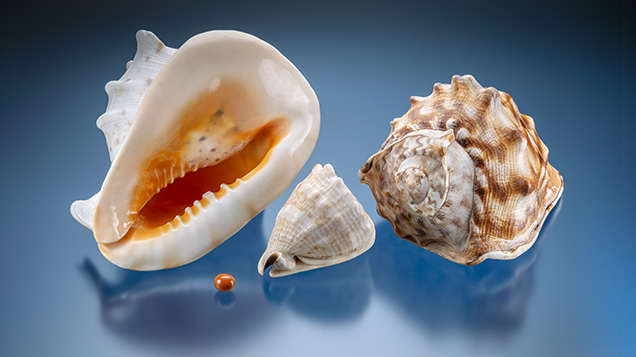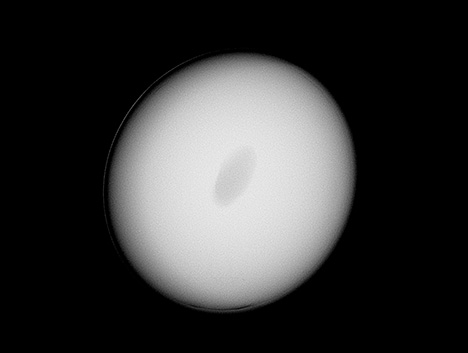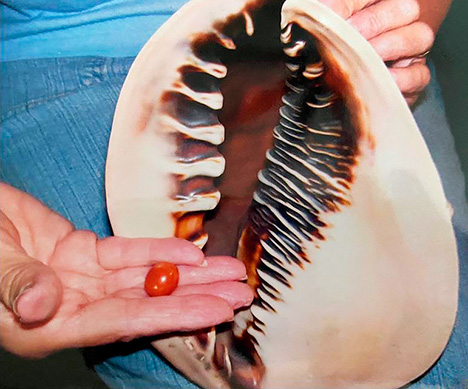A Reported Cassis Pearl from Key West, Florida

The Carlsbad laboratory recently examined an oval non-nacreous pearl weighing 29.78 ct and measuring 17.86 × 15.64 × 14.58 mm (figure 1). The pearl possessed a uniform pinkish orange bodycolor and a porcelaneous surface with flame structures. The flames were short and wide and tapered to a point. This fine, well-formed flame structure looked like a homogeneous spotted pattern throughout the pearl’s surface (figure 2, left), yet the flame forms were evident at high magnification under the microscope (figure 2, right). Subsequently, Raman spectroscopic analysis with a 514 nm argon-ion laser verified the pearl was composed of aragonite, with peaks at 154, 181, 192, 207, 704, and 1085 cm–1 (J. Urmos et al., “Characterization of some biogenic carbonates with Raman spectroscopy,” American Mineralogist, Vol. 76, 1991, pp. 641–646); two strong polyene peaks at 1131 and 1523 cm–1 were indicative of natural color (C. Hedegaard et al., “Molluscan shell pigments: An in situ resonance Raman study,” Journal of Molluscan Studies, Vol. 72, No. 2, 2006, pp. 157–162). Real-time microradiography (RTX) revealed a dark gray oval void-like feature in the center and a growth ring in the outer area of the pearl (figure 3). Such a void can be found in natural pearls from a number of porcelaneous pearl-producing mollusks.


Orange porcelaneous pearls are produced from various marine gastropod species such as queen conch (Lobatus gigas), Melo species, Cassis species, and horse conch (Fasciolariinae subfamily). The flame characteristics and pinkish orange bodycolor of this pearl were unlike those of orange porcelaneous pearls previously submitted to GIA. The client who submitted the pearl stated that it was found inside a queen helmet conch in the early 1960s by Bert Matcovich (figure 4), who owned a shell shop in Key West, Florida. Born into a family of shellers with more than 60 years of experience, Matcovich fished the waters off Key West for conchs and visited local shrimp boats daily in the 1960s to purchase various types of shells. This pearl was a remarkable discovery.
Queen helmet, also known as emperor helmet, is the common name for a marine gastropod species called Cassis madagascariensis, which belongs to the Cassidae family. The species is generally distributed in the tropical western Atlantic, including the Caribbean Sea (J.H. Leal, “Gastropods,” in K.E. Carpenter, The Living Marine Resources of the Western Central Atlantic, Vol. 1, Rome: Food and agriculture organization of the United Nations, 2002, pp. 99–127). Queen helmet shells have large, thick whorls with short spires, and three rows of knobs often appear on the body. They have a flat large parietal shield next to an aperture, and the color ranges from pale cream to deep salmon, often with a dark orangy brown color between the “teeth” (see again figure 4). Owing to their significant thickness, these colorful shells are widely used for cameo carving.
Cassis pearls typically have a fine and slender flame structure, often with intersecting flames. Their colors traditionally range from light orange to orangy brown, sometimes with patchy color. This pearl was unlike typical Cassis pearls examined by GIA, and its mollusk identity could not be confirmed with gemological testing. Nonetheless, this fine large natural non-nacreous pearl and its discovery story from six decades ago are noteworthy.



